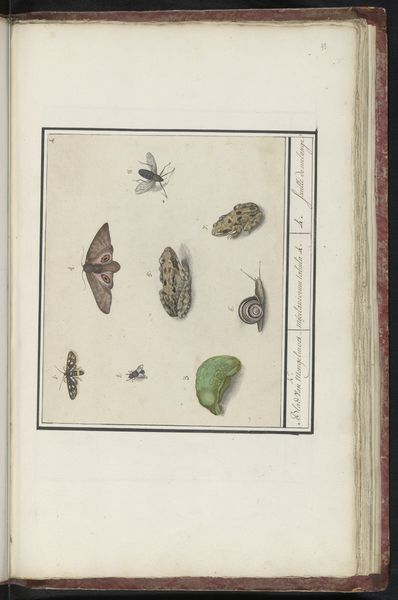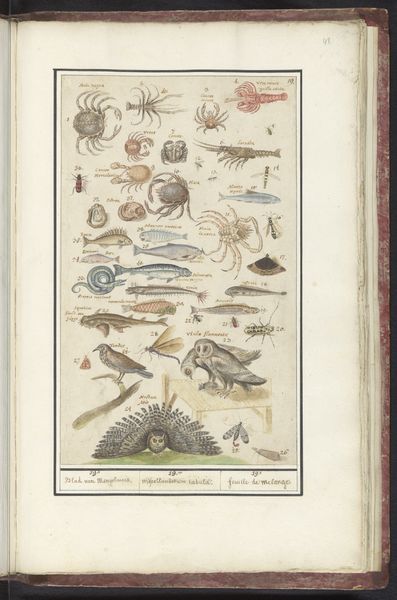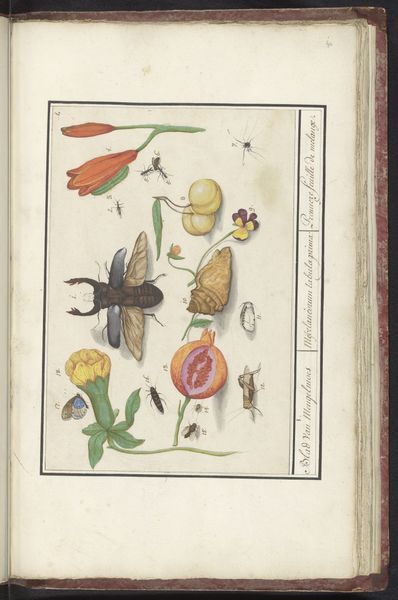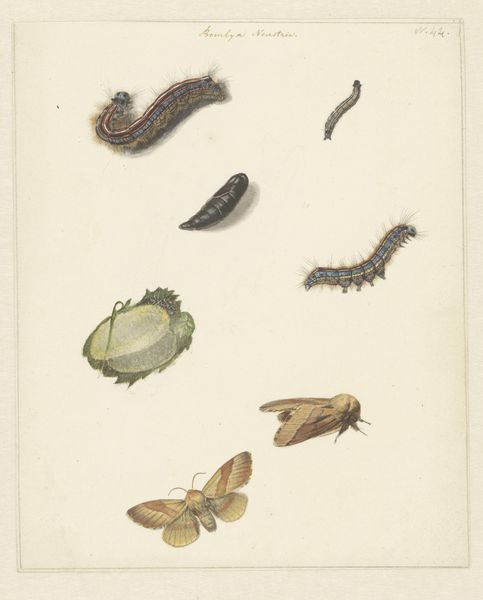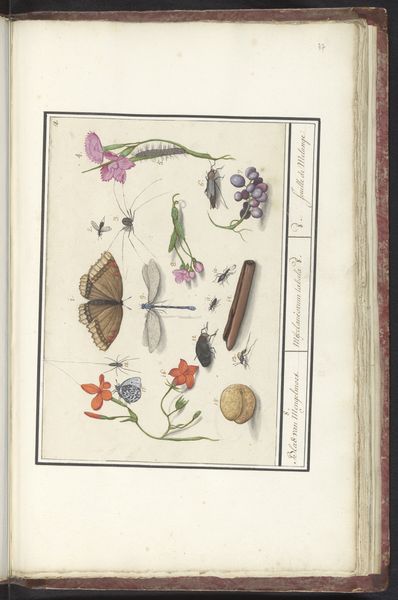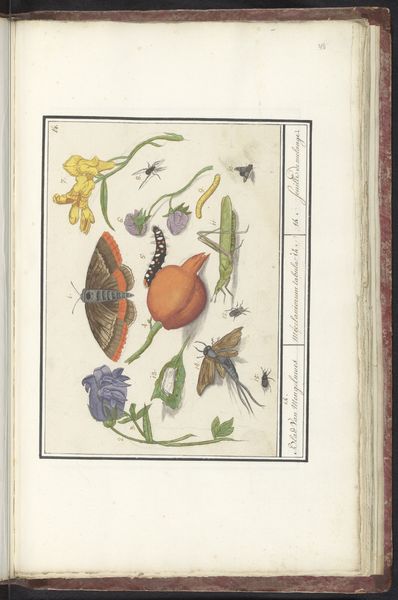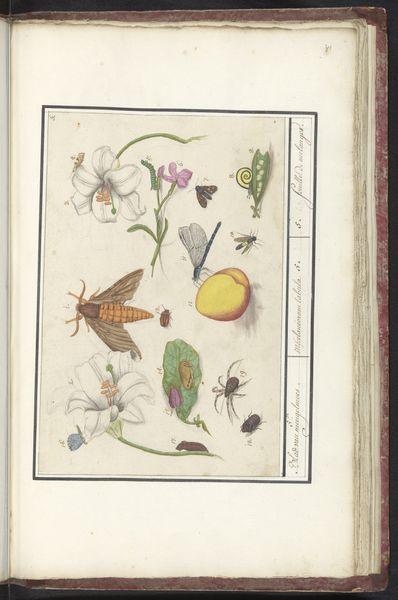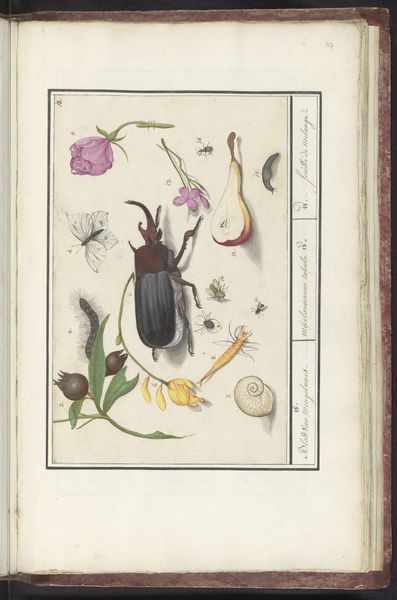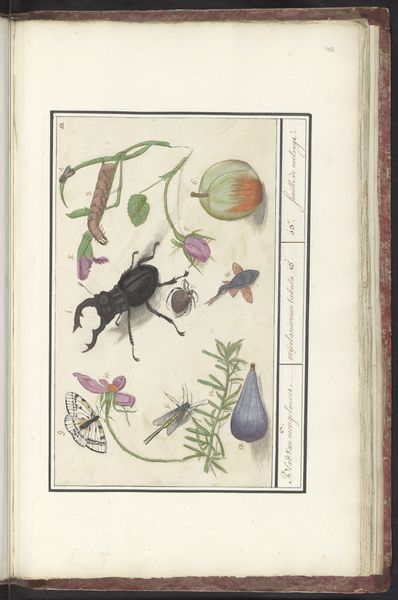
drawing, watercolor
#
drawing
#
11_renaissance
#
watercolor
#
coloured pencil
#
watercolor
Dimensions: height 266 mm, width 182 mm
Copyright: Rijks Museum: Open Domain
Curator: Elias Verhulst’s “Natuurhistorische ensemble (nr. 20)” created sometime between 1596 and 1610, offers us a glimpse into the world of Renaissance natural history illustration. Editor: It’s fascinating! All those meticulously rendered insects and what’s that? Is that a seahorse at the center? There’s a very curious feel, scientific yet slightly fantastical in the way everything is arranged. Curator: Indeed. Verhulst, whose origins can be traced back to embroidery design and draftsmanship, here brings that detailed technique to a visual inventory of creatures. Watercolors and detailed pen lines show us not just representation, but an engagement with processes of observing, classifying, and documenting nature as labor. The very act of producing these images elevates this work, initially functional, towards high art status. Editor: Thinking about the historical moment, this piece strikes me as deeply entwined with burgeoning colonialism and the insatiable European desire to categorize and claim the natural world. We are confronted with power dynamics embedded in this type of scientific exploration that fueled and justified global expansion. The act of cataloging becomes a way of possessing and controlling knowledge and resources from other parts of the world. Curator: The meticulous detail would likely serve a function. It could've acted as an identification key for burgeoning apothecaries and traders expanding networks and supply chains. We should think about the flow of the pigments themselves: where did they originate, and who ground them? Labor history often overlooks artists, but that oversight is not something we should repeat. Editor: It makes you wonder about the social implications tied to that meticulousness. Are we looking at something simply observed, recorded, and displayed? Or, are we seeing nature presented as a kind of aesthetic performance designed to elicit responses of wonder, authority and inevitably reinforce specific ideological frameworks around knowledge, and our place in nature? Curator: Thinking through this lens reveals it's so much more than "just" the sum of pigments applied to paper. It reveals human labor and its relation to both materials and context. Editor: It offers insight into power dynamics during its era, shaping dialogues on identity, gender, and sociopolitical climates, all embedded within visual culture.
Comments
No comments
Be the first to comment and join the conversation on the ultimate creative platform.
